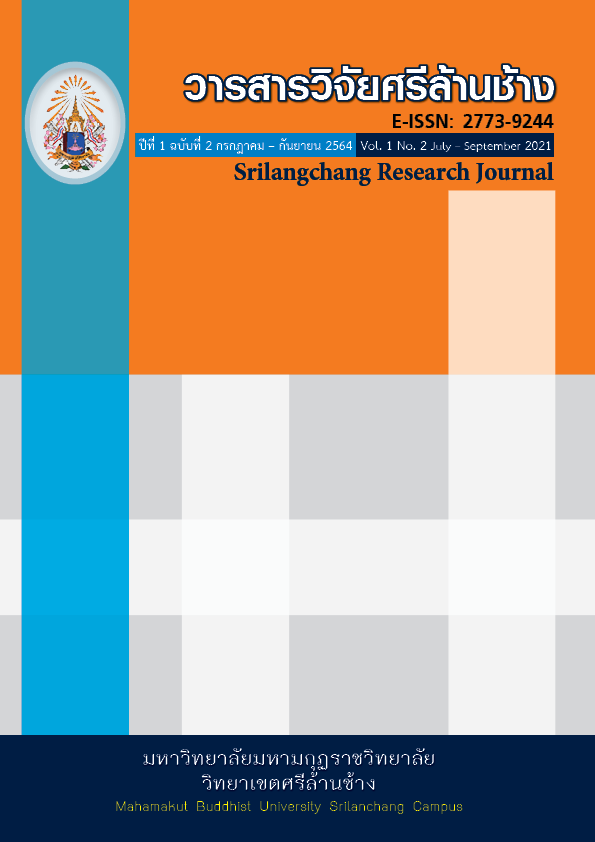MEDITATION: WITH SOLVING STUDENTS UNWANTED PROBLEMS
Keywords:
Meditation, Critics, BehaviorsAbstract
Education was regarded as a basis of human development to create people with appropriate behavior. Most of students, especially secondary school students, were currently found with inappropriate behaviors such as not attending the class, lack of responsibilities, not doing assigned homework and class work, using communication devices in a wrong way, making quarrels, stealing, having sexual intercourse, telling a lie, and taking drugs. All their behaviors gave rise to severe damages, especially economic or social aspects, and it was an urgent issue to be further improved. The improvement of students’ inappropriate behavior by the Buddhist principle of meditation was regarded as a better way to change their undesirable behavior. There are several principles of meditation, depending upon each religion and sect. In Buddhism, there are forty ways of mental meditation and more appropriate insight development that the Buddha taught and recommended the people to choose an appropriate way for themselves. The proper meditation was believed to improve or develop the students’ undesirable behavior. For example, the meditation for self-healing was described to reduce stress, affecting a human’s body, feeling and mind. The meditation would make a person good-natured, calm, and relaxed. The given conscience would reduce the students’ bad behavior. The meditation-based learning was from the learner’s intention; he or she placed his/her mind closely to the study until their mind were concentrated into the learning process in terms of listening, thinking, speaking, and writing. The meditation was directly effective to their behavior. In summary, the meditation made people mindful whenever they thought, spoke, and acted, and it also inhibited people’s improper behavior, and influenced the students’ more efficient thinking and remembering.
References
กาญจนา หาญศรีวรพงศ์ และพระมหามิตร ฐิตปญฺโญ. (2562). สมาธิกับการพัฒนาคุณภาพชีวิตมนุษย์. วารสารวิชาการธรรมทรรศน์ มหาวิทยาลัยมหาจุฬาลงกรณราชวิทยาลัย วิทยาเขตขอนแก่น. ปีที่ 19 ฉบับที่ 1 (มกราคม–มีนาคม 2562). กรุงเทพมหานคร : สำนักพิมพ์มหาจุฬาลงกรณ์.
ฐิติวัสส์ สุขป้อม, ณัฏฐกรณ์ ปะพาน, สันทนา วิจิตรเนาวรัตน์, ปิยาภรณ์ เตชะเรืองรอง และอุดม ตะหน่อง. (2562). สมาธิกับจิตวิญญาณความเป็นครู. วารสารบัณฑิตวิทยาลัย มหาวิทยาลัยราชภัฏจันทรเกษม ปีที่14 ฉบับที่ 1 (มกราคม–มิถุนายน 2562). กรุงเทพมหานคร : มหาวิทยาลัยราชภัฏจันทรเกษม
ราชกิจจานุเบกษา. (2542). พระราชบัญญัติการศึกษาแห่งชาติ พ.ศ.2542 เล่ม 116 ตอนที่ 74 ก
รศ.ดร.สมพร กันทรดุษฎี - เตรียมชัยศรี. (2561). การปฏิบัติสมาธิ เพื่อการเยียวยาสุขภาพ. จัดพิมพ์โดยกองการแพทย์ทางเลือกกรมการแพทย์แผนไทยและการแพทย์ทางเลือก กระทรวงสาธารณสุข.
ศุภกฤษ ไชยศร. (2564) การเรียนรู้โดยใช้สมาธิเป็นฐาน(Concentration - Based Learnin). โรงเรียนไทยรัฐวิทยา95 (วัดโพธิ์ทองบน).
สุภาพรรณ เพิ่มพูน, อนุชา โสภาคย์วิจิตร์ และณฐภัทร อ่าพันธุ์. (2563). การฝึกสมาธิแนวพุทธเชิงสร้างสรรค์ในชีวิตประจำวันสำหรับเยาวชนไทย. วารสารบัณฑิตศึกษาปริทรรศน์ มหาวิทยาลัยมหาจุฬาลงกรณราชวิทยาลัย. ปีที่ 16 ฉบับที่ 1 มกราคม–เมษายน 2563.


